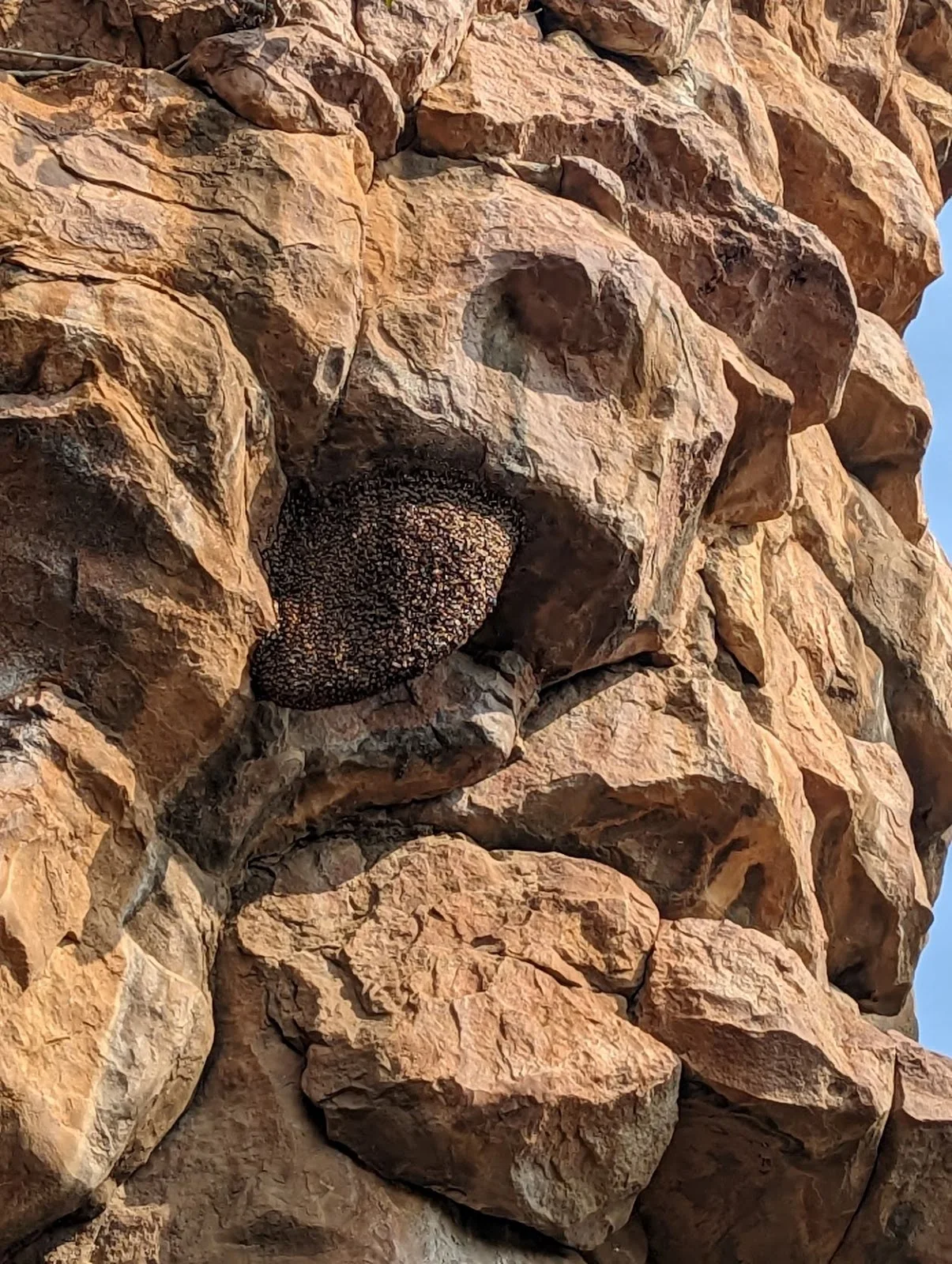How Science Works
Changing Minds When the Evidence Changes
Changing Minds When the Evidence Changes
Auditorium Cave near Bhopal, India
Credit: Joe Meert
Mistaken fossil rewrites history of Indian subcontinent for second time - News - University of Florida
It's a source of embarrassment to the scientists concerned, and no doubt a small crumb of comfort to those anti-science extremist propagandists trying to fool scientifically illiterate simpletons into thinking science is unreliable, that scientists have discovered a major mistake.
To those who understand science and how scientific opinion is always contingent and subject to revision and where nothing is ever cast in tablets of stone; where the only certainty is that there are no certainties, it is always rewarding and reassuring when mistakes are discovered and corrected because this shows the scientific method is working.
Just such an example came to light recently when scientists revisited the site where a fossil, thought at the time it was first discovered to be highly significant, had been found. What they discovered was that the ‘’ not only was nothing of the sort, but was actually in an advanced state of decay and peeling off the wall of the cave in which it had been found about a year earlier - things no self-respecting fossil should be doing.
It turned out that the 'fossil' was the recent remains of a wild honeybee (Apis dorsata) hive which, when discovered, bore a remarkable resemblance to an Ediacaran fossil, Dickinsonia tenuis, only previously known from South Australia. The implications for the age of the rock formation in which it was appeared to solve the problem of accurate dating of the rock formation and its origins in the ancient supercontinent, Gondwanaland, some 550 million years ago.
Gregory Retallack, professor emeritus at the University of Oregon and lead author of the original paper, and his colleagues have agreed with the new findings and are submitting a comment in support of the new paper to the journal, Gondwana Research in which both papers are published. The original paper will now be withdrawn.
As Eric Hamilton in the University of Florida news release points out:
This kind of self-correction is a bedrock principle of the scientific method. But the reality is that admitting errors is hard for scientists to do, and it doesn’t happen often…
Correcting the fossil record puts the age of the rocks back into contention. Because the rock formation doesn’t have any fossils from a known time period, dating it can be difficult.
Meert says the evidence continues to point to the rocks being closer to one billion years old. His team has used the radioactive decay of tiny crystals called zircons to date the rocks to that time period. And the magnetic signature of the rocks, which captures information about the Earth’s magnetic field when the rocks formed, closely matches the signatures of formations confidently dated to a billion years ago.You might say, ‘Okay, well what's the big deal if they are 550 million or a billion years old?’ Well, there are lots of implications. One has to do with the paleogeography at the time, what was happening to continents, where the continents were located, how they were assembled. And it was a period when life was going through a major change, from very simple fossils to more complex fossils.
So trying to figure out the paleogeography at the time is very, very important. And in order to figure out the paleogeography, we have to know the age of the rocks.
Professor Joseph G. Meert, lead author
Professor of geology
Department of Earth and Planetary Sciences
University of Florida, Gainesville, FL, USA
Other scientists have reported findings supporting a younger age. The time period is essential to understand because of its implications for the evolution of life in the area and how the Indian subcontinent formed.
References:
Retallack, Gregory J.; Matthews, Neffra A.; Master, Sharad; Khangar, Ranjit G.; Khan, Merajuddin (2021)
Dickinsonia discovered in India and late Ediacaran biogeography
Gondwana Research; 90, pp. 165-170. DOI: 10.1016/j.gr.2020.11.008
Meert, Joseph G.; Pandit, Manoj K.; Kwafo, Samuel; Singha, Ananya (2023)
Stinging News: ‘Dickinsonia’ discovered in the Upper Vindhyan of India not worth the buzz
Gondwana Research; 117, pp. 1-7. DOI: 10.1016/j.gr.2023.01.003





No comments :
Post a Comment
Obscene, threatening or obnoxious messages, preaching, abuse and spam will be removed, as will anything by known Internet trolls and stalkers, by known sock-puppet accounts and anything not connected with the post,
A claim made without evidence can be dismissed without evidence. Remember: your opinion is not an established fact unless corroborated.